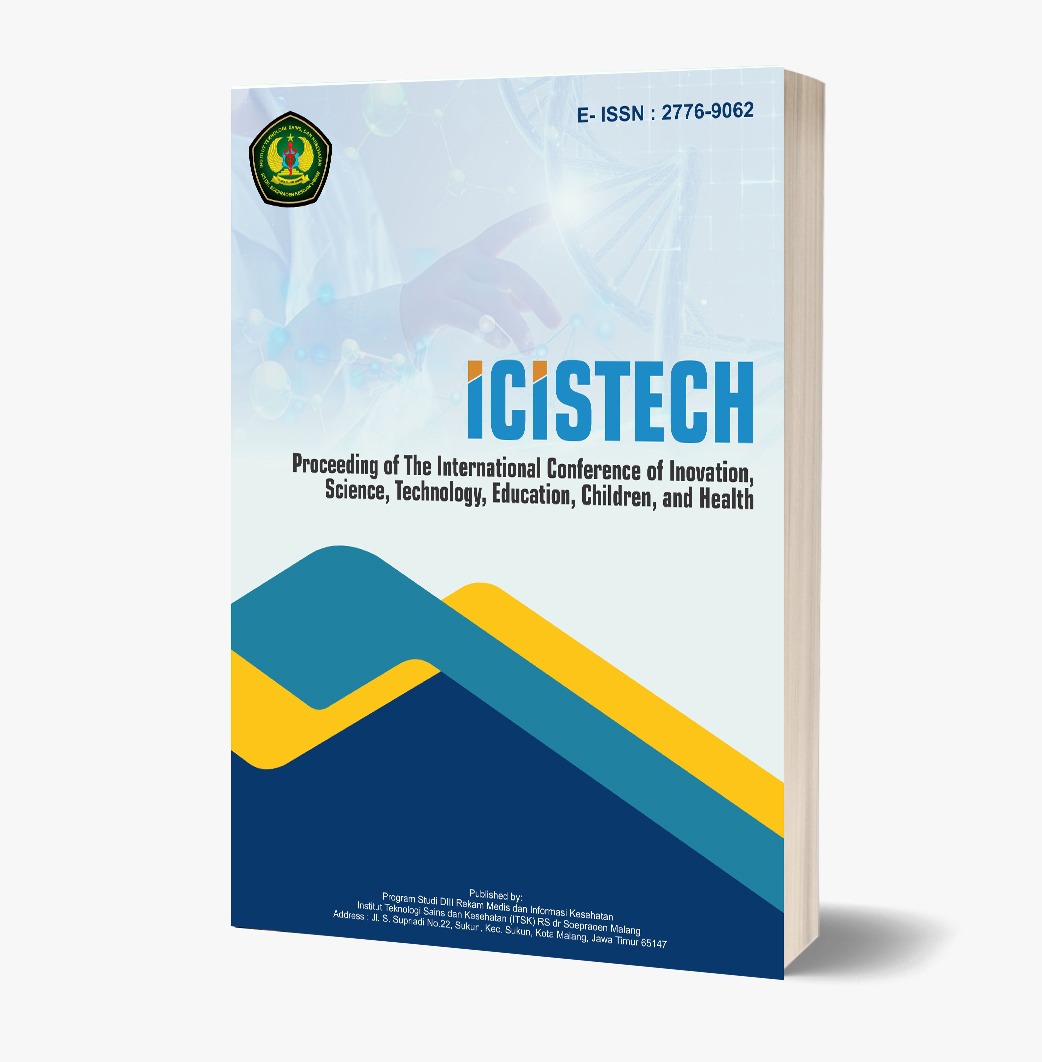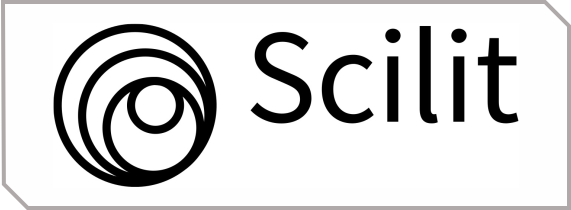Exploring 4-7-8 Breathing for Stress Relief and Improved Quality of Life in Chronic and Degenerative Diseases: A Scoping Review
DOI:
https://doi.org/10.62951/icistech.v5i1.190Keywords:
4-7-8 breathing, chronic illness, quality of life, slow breathingAbstract
Chronic and degenerative diseases have a profound effect on patients' overall well-being, often accompanied by psychological distress such as anxiety and chronic stress. While pharmacological treatments are commonly used, they may have limitations, including accessibility issues and side effects, which have prompted interest in non-pharmacological interventions. This scoping review aims to systematically map and synthesize the empirical evidence on the physiological and psychological effects of the 4-7-8 breathing technique, a structured slow-breathing method that involves inhaling for 4 seconds, holding the breath for 7 seconds, and exhaling for 8 seconds. The review adhered to PRISMA-ScR guidelines and included 15 studies published between 2013 and 2024. These studies examined diverse populations and employed various methodological approaches. The findings were categorized into five major themes: (1) the 4-7-8 technique's effectiveness in reducing stress and anxiety, (2) improvements in cardiovascular markers such as heart rate variability and blood pressure, (3) its adaptability in both clinical and community-based multimodal interventions, (4) its preventive benefits for healthy individuals, and (5) its impact on parasympathetic activity via vagal pathways, enhancing autonomic regulation and emotional stability. The technique is supported by both theoretical and empirical evidence, positioning it as an accessible, low-cost psychoregulatory intervention. The results suggest that the 4-7-8 breathing technique could play a key role in holistic nursing care, health education, and public health promotion strategies, offering a simple yet effective approach to managing stress, improving mental health, and enhancing cardiovascular health. Future studies could explore long-term benefits and its integration into more diverse health interventions.
References
[1] Pratibha Pandekar and Poovishnu Devi Thangavelu, "Effect of 4-7-8 Breathing Technique on Anxiety and Depression in Moderate COPD Patients," Int. J. Health Sci. Res., vol. 9, no. 5, pp. 209–214, 2019.
[2] Gülfidan Kurt Aktaş and Vesile İlgin, "The Effect of Deep Breathing Exercise and 4-7-8 Breathing Techniques Applied to Patients After Bariatric Surgery on Anxiety and Quality of Life," Obes. Surg., vol. 33, pp. 920–929, Mar. 2023, doi: 10.1007/s11695-022-06405-1.
[3] Joshua Marchant, "Comparing the Effects of Square, 4-7-8, and 6 Breaths-per-Minute Breathing Conditions on Heart Rate Variability, CO₂ Levels, and Mood," Thesis, Brigham Young University, 2025.
[4] Jaruwan Vierra, Orawan Boonla, and Piyathida Prasertsri, "Effects of sleep deprivation and 4-7-8 breathing control on heart rate variability, blood pressure, blood glucose, and endothelial function in healthy young adults," Physiol. Rep., vol. 10, 2022.
[5] Riska Cahyani Zahra, Enita Dewi, and Neny Marumpy, "Foot Reflexology and 4-7-8 Breathing Exercise as Supporting Therapy to Reduce Anxiety and Maintain Vital Signs of ICU Patients," J. Berita Ilmu Keperawatan, vol. 16, no. 2, pp. 320–328, 2023.
[6] Amy Naugle, The Use of Diaphragmatic Breathing Techniques to Reduce Stress in Pre-Licensure Nursing Students, Gardner-Webb University, 2024.
[7] Taylor Scott Willi, "Investigation of an Ultra-Brief Breathing Technique for the Treatment of Physiological and Psychological Markers of Anxiety," Dissertation, Simon Fraser University, 2023.
[8] Andrea C. Tricco et al., "PRISMA Extension for Scoping Reviews (PRISMA-ScR): Checklist and Explanation," Ann. Intern. Med., vol. 169, no. 7, pp. 467–473, 2018, doi: 10.7326/M18-0850.
[9] Diva Azalia Karangan, Ananda Siregar, Ayu Halim, and Rian Simanjuntak, "The Effect Of The Combination Of Deep Breath Relaxation 4-7-8 Method And Classical Music On Anxiety Levels Preoperative Patients With Spinal Anesthesia," J. Teknologi Kesehatan, vol. 20, no. 1, Mar. 2024.
[10] Ryota Kobayashi and Hideyuki Negoro, "Acute effects of the 4-4-8 breathing technique on arterial stiffness in healthy young men," Cardiol. J., vol. 31, no. 3, pp. 418–426, 2024, doi: 10.5603/CJ.96299.
[11] Richard P. Brown and Patricia L. Gerbarg, "Sudarshan Kriya Yogic Breathing in the Treatment of Stress, Anxiety, and Depression: Part I—Neurophysiologic Model," J. Altern. Complement. Med., vol. 21, no. 3, pp. 167–173, 2015, doi: 10.1089/acm.2013.0337.
[12] Shirley Telles, Nilkamal Singh, Acharya Balkrishna, "Immediate Effect of a Slow Pace Breathing Practice on Anxiety," Indian J. Physiol. Pharmacol., vol. 57, no. 4, pp. 414–420, 2013.
[13] Xiaocheng Ma et al., "The Effect of Diaphragmatic Breathing on Attention, Negative Affect and Stress in Healthy Adults," Front. Psychol., vol. 8, p. 874, 2017, doi: 10.3389/fpsyg.2017.00874.
[14] Andrea Zaccaro et al., "How Breath-Control Can Change Your Life: A Systematic Review on Psycho-Physiological Correlates of Slow Breathing," Front. Hum. Neurosci., vol. 12, p. 353, 2018, doi: 10.3389/fnhum.2018.00353.
[15] A. A. Saoji, S. Raghavendra, and S. Manjunath, "Effects of Yogic Breathing Techniques on Heart Rate Variability and Perceived Stress in Healthcare Students: A Randomized Controlled Trial," J. Ayurveda Integr. Med., vol. 10, no. 3, pp. 201–205, 2019, doi: 10.1016/j.jaim.2018.06.008.
[16] Brown, R. P., & Gerbarg, P. L. (2005). Sudarshan Kriya Yogic Breathing in the Treatment of Stress, Anxiety, and Depression: Part II—Clinical Applications and Guidelines. Journal of Alternative and Complementary Medicine, 11(4), 711–717. https://doi.org/10.1089/acm.2005.11.711
[17] Ma, X., Yue, Y., Gong, Y., Zhang, H., Duan, H., Shi, W., & Wang, D. (2017). The Effect of Diaphragmatic Breathing on Attention, Negative Affect, and Stress in Healthy Adults. Frontiers in Psychology, 8, 874. https://doi.org/10.3389/fpsyg.2017.00874
[18] Perciavalle, V., Di Corrado, D., Blandino, M., Fecarotta, P., Gagliardo, A., & Coco, M. (2017). The role of deep breathing on stress. Neurological Sciences, 38(3), 451–458. https://doi.org/10.1007/s10072-016-2790-8
[19] Zope, S. A., & Zope, R. A. (2013). Sudarshan Kriya Yoga: Breathing for health. International Journal of Yoga, 6(1), 4–10. https://doi.org/10.4103/0973-6131.105935
[20] Sharma, M., & Rush, S. E. (2014). Mindfulness-Based Stress Reduction as a Stress Management Intervention for Healthy Individuals: A Systematic Review. Journal of Evidence-Based Complementary & Alternative Medicine, 19(4), 271–286. https://doi.org/10.1177/2156587214543143
[21] Paul, M., & Garg, K. (2012). The effect of deep breathing on stress. Indian Journal of Physiology and Pharmacology, 56(2), 183–187.
[22] D.P. Priasmoro and R. Lestari, "Prevalence of a sedentary lifestyle as a predictor of risk of chronic diseases and stress levels in Malang, Indonesia," Malaysian Journal of Public Health Medicine, vol. 23, no. 1, pp. 11–16, 2023. doi: 10.37268/mjphm/vol.23/no.1/art.1346.
Downloads
Published
How to Cite
Issue
Section
License
Copyright (c) 2025 Proceeding of The International Conference of Inovation, Science, Technology, Education, Children, and Health

This work is licensed under a Creative Commons Attribution-ShareAlike 4.0 International License.













